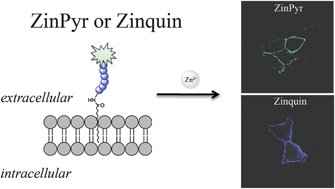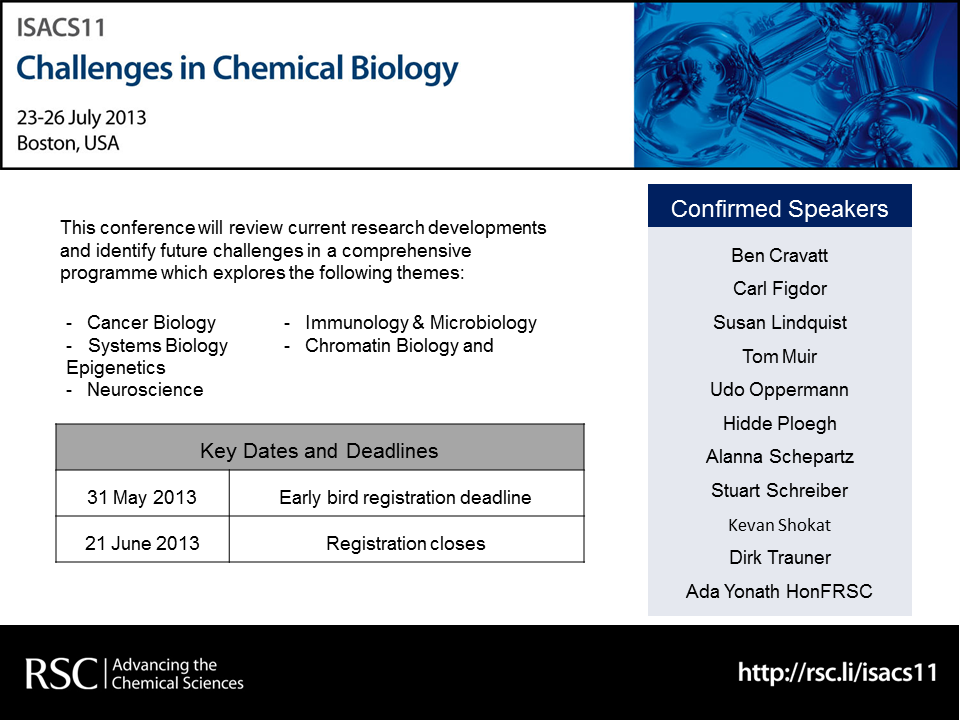 Chemical Science is dedicated to publishing research of exceptional significance from across the chemical sciences. For us, it’s all about giving our authors the visibility and recognition their research deserves.
Chemical Science is dedicated to publishing research of exceptional significance from across the chemical sciences. For us, it’s all about giving our authors the visibility and recognition their research deserves.
So we are delighted to announce that our 2012 Impact Factor* has risen to an impressive 8.314. This fantastic result further demonstrates that Chemical Science is one of the leading general chemistry journals.
Thank you to all who have contributed to the journal’s success so far – our authors, referees, readers and Editorial and Advisory Boards – we are very grateful for your support.
Our unique combination of high quality articles, flexible format and excellent Associate Editors, makes it clear why so many leading scientists have already chosen to publish in Chemical Science. You can see our most highly cited articles listed below.
We invite you to submit your exceptional research to Chemical Science today.
Publishing your research in Chemical Science means your article will have excellent visibility and will be read and cited by your colleagues. See the citation profile of Chemical Science articles compared to other leading general chemistry journals.
Top cited Chemical Science articles:
Perspectives
Dialkylbiaryl phosphines in Pd-catalyzed amination: a user’s guide
Author(s): Surry, David S.; Buchwald, Stephen L.
Diamine ligands in copper-catalyzed reactions
Author(s): Surry, David S.; Buchwald, Stephen L.
Exploiting single-ion anisotropy in the design of f-element single-molecule magnets
Author(s): Rinehart, Jeffrey D.; Long, Jeffrey R.
DOI: 10.1039/c1sc00513h Published: 2011
Continuous flow multi-step organic synthesis
Author(s): Webb, Damien; Jamison, Timothy F.
Modifying MOFs: new chemistry, new materials
Author(s): Cohen, Seth M.
Reactivity modulation in container molecules
Author(s): Breiner, Boris; Clegg, Jack K.; Nitschke, Jonathan R.
Carbocatalysis: Heterogeneous carbons finding utility in synthetic chemistry
Author(s): Dreyer, Daniel R.; Bielawski, Christopher W.
Graphene-based electronic sensors
Author(s): He, Qiyuan; Wu, Shixin; Yin, Zongyou; et al.
Edge Articles
Hydrogen storage and carbon dioxide capture in an iron-based sodalite-type metal-organic framework (Fe-BTT) discovered via high-throughput methods
Author(s): Sumida, Kenji; Horike, Satoshi; Kaye, Steven S.; et al.
Chemical tuning of CO2 sorption in robust nanoporous organic polymers
Author(s): Dawson, Robert; Adams, Dave J.; Cooper, Andrew I.
*The Impact Factor provides an indication of the average number of citations per paper. Produced annually, Impact Factors are calculated by dividing the number of citations in a year by the number of citeable articles published in the preceding two years. Data based on 2012 Journal Citation Reports®, (Thomson Reuters, 2013).















-429---NS_tcm18-221866.jpg)



-429---NS_tcm18-221958.jpg)

